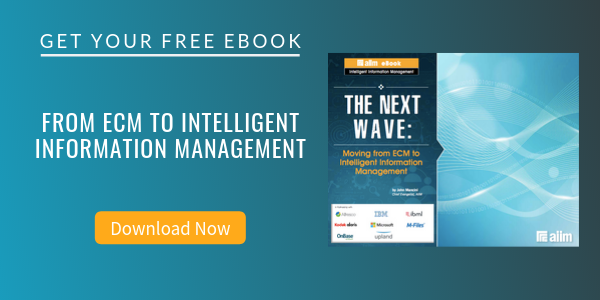
8 Things to Remember When Managing Enterprise Content Management Applications
Enterprise Content Management (ECM)
Too often, an ECM delivery organization is driven to focus on ECM application features and delivery dates. This imbalanced behavior results from the all-powerful project schedule, senior management edicts, and business community pressures. To keep a balance of tactical and strategic objectives, common-sense operating management principles tuned for ECM shared service organizations should be part of a manager’s monthly accomplishments list.
Here are my top eight lessons gleaned from conversations and observations:
-
Know if you’re running a business-critical application.
It can sometimes be difficult to decide if an application is truly business-critical. An easy way to look at it is this…if your ECM business process or application is customer-facing, drives revenue, satisfies major regulatory hurdles, or reduces major operational cost – it’s business-critical. To determine just how critical it is, take a look at how business applications are rated for disaster recovery criteria – i.e., Tier I, II, or III. If your application is Tier I, treat the ECM portion in the same manner and then demonstrate/communicate the importance when budget season arrives.
-
Know who owns the blueprint.
Start by architecting an ECM plan. You can’t just let the ECM strategy happen because of the selected ECM components or platforms. And you can’t abdicate the technical competence to solely outside experts. Instead, spend consulting dollars on an experienced, business-aware technical traffic cop employee(s) to keep everyone whole.
-
Know you don’t operate in a silo.
ECM depends on many subsystems – network, database, security, etc. Acknowledge these peer groups when communicating successes, and, in return, they will help during fire drill events. Also, be sure to assess your IT culture to determine if it is protective (‘we’ vs. ‘they’) or transparent (‘us’) – and communicate appropriately with the peer groups.
-
Know your users' true service levels.
Users value consistent service levels and reliability – not new, six-month in the making enhancements that are really just designed for one very vocal user. Plumbing (traditional on-premise, cloud, or hybrid designs) is important and demands continuous oversight. Otherwise, your ECM pilots/early adopters will always be your success stories.
-
Know how you’re doing.
IT management loves numbers -- especially when the numbers are accurate, directly measure ECM service levels, and are communicated on a continual basis. So be sure to make your manager’s conversations with his senior business peers easy, relevant, and credible. Rather than having the business community measure ECM service levels by emotional phone calls, urgent emails and surprise meetings at your office (as this is not effective) -- create a straightforward ECM scorecard (dashboard) that represents ongoing operational objectives (providing true valuable data).
-
Know your partners.
Partner with your main suppliers, and do not always select them by the cheapest ‘best and final’ priced SKU. While this is easy to say, and difficult to do in these times, having a sound ROI case (which a partner should assist with) will contribute to your long term success – don’t forgot the numerator part of the ROI business case.. This will prevent a vendor transaction-driven "end around" play to your superiors when the partner hears "no."
-
Know what is next.
Maintain an ECM skunk works or lab to try stuff out, allow partners to show and tell, and keep relevance. Involve your champions from the business community. Great for staff development - this small investment can be a shared area with a peer from point number 3 and help ECM visibility during an IT open house or tours.
-
Know your timeline and ROI.
As with any IT laden project, dates are circumspectly viewed by the business community. Surprise all (especially your project manager) and deliver on-time. Reduce application function to give credence to point number 4. If you can look in the mirror when setting a delivery date, you can be firm against the “it will not work without” uprisings. Holding fast to a delivery date is key to meet today’s front end loaded ROI justifications.
About John Mancini
John Mancini is the President of Content Results, LLC and the Past President of AIIM. He is a well-known author, speaker, and advisor on information management, digital transformation and intelligent automation. John is a frequent keynote speaker and author of more than 30 eBooks on a variety of topics. He can be found on Twitter, LinkedIn and Facebook as jmancini77. Recent keynote topics include: The Stairway to Digital Transformation Navigating Disruptive Waters — 4 Things You Need to Know to Build Your Digital Transformation Strategy Getting Ahead of the Digital Transformation Curve Viewing Information Management Through a New Lens Digital Disruption: 6 Strategies to Avoid Being “Blockbustered” Specialties: Keynote speaker and writer on AI, RPA, intelligent Information Management, Intelligent Automation and Digital Transformation. Consensus-building with Boards to create strategic focus, action, and accountability. Extensive public speaking and public relations work Conversant and experienced in major technology issues and trends. Expert on inbound and content marketing, particularly in an association environment and on the Hubspot platform. John is a Phi Beta Kappa graduate of the College of William and Mary, and holds an M.A. in Public Policy from the Woodrow Wilson School at Princeton University.



